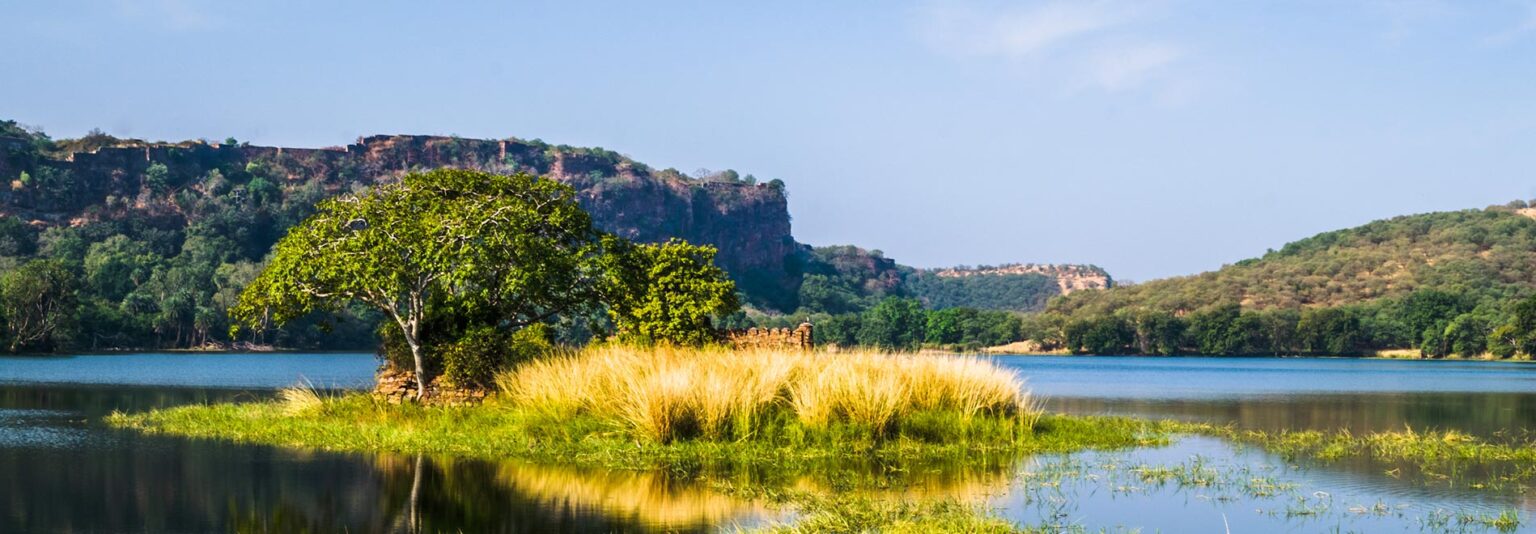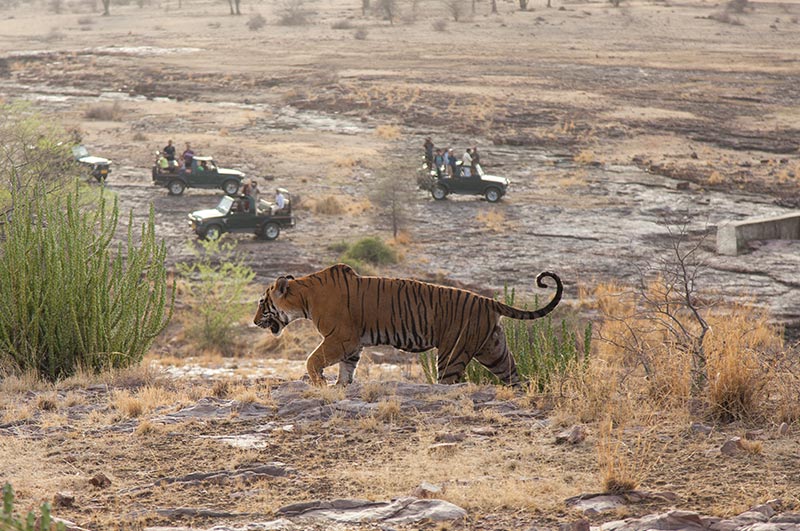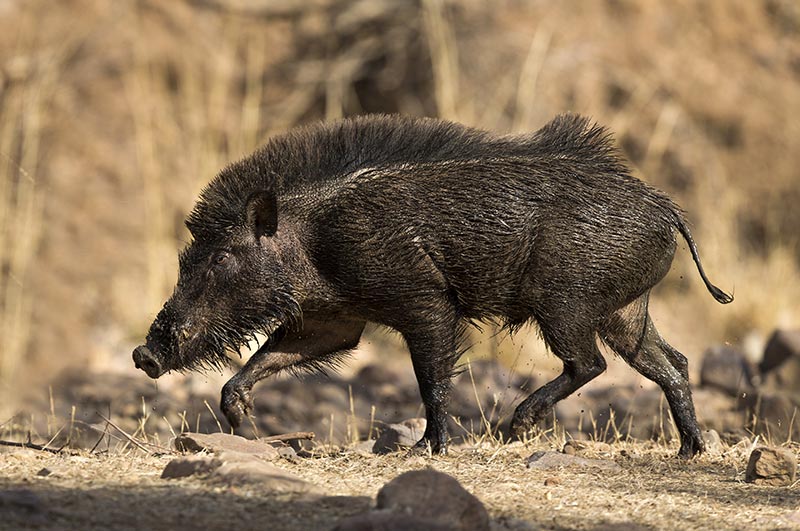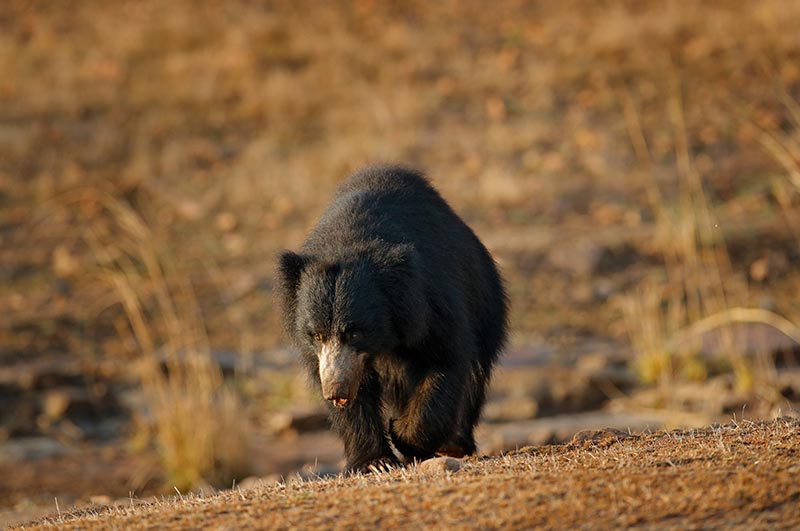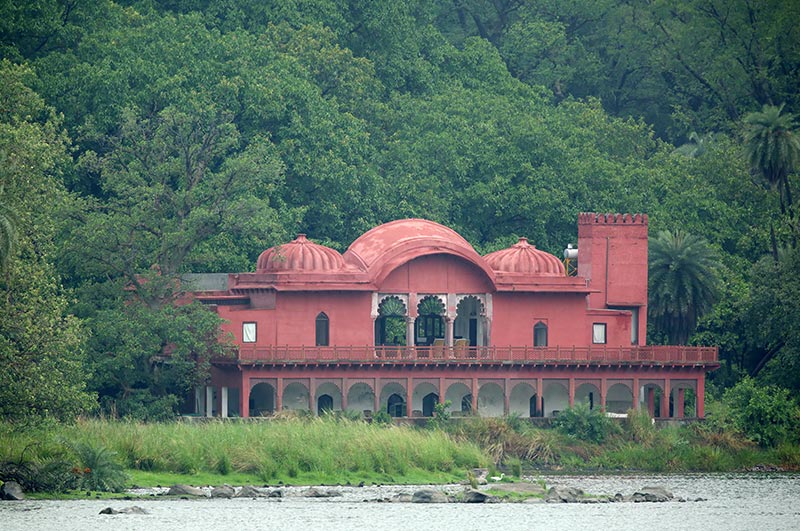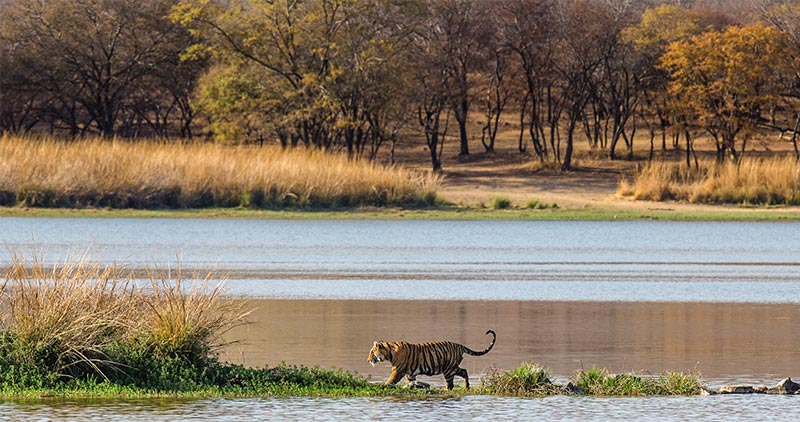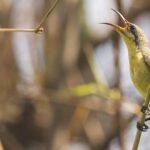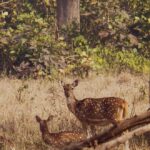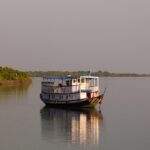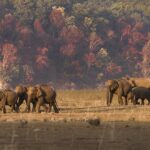Ranthambhore National Park: Keep Calm And Taste The Wild Royalty
The flavours of India are intricate, elegant and pleasing. The majesty of our mountains, the grace of our plains, the grandeur of our seas and the charm of our desert; actually everything about India has an alluring charisma to it. The splendid hospitality of our culture and vibrant enticement of modern urban lifestyle with the abundance of enchanting wilderness is fascinating.
Today let us visit the royal state of Rajasthan and behold the exalted sight of wilderness in the Ranthambhore National Park. Mother Nature sings her melodious tenor in the marvellous ambience of Ranthambhore National Park.
Geography of Ranthambhore National Park
Ranthambhore National Park and Tiger Reserve is one of the world’s most famous wilderness areas. Earlier, the national park used to be hunting ground for the royal Rajputs. The Ranthambore National Park was established as the Sawai Madhopur Game Sanctuary in 1955 by the Government of India.
Located at the junction of some of the geologically oldest mountain ranges – the Aravallis and Vindyas – Ranthambhore National Park is the winsome mix of rolling hills and crags, and meadows, lakes and rivulets. The national park is located just 14kms from Sawai Madhopur and offers the splendiferous chance of sighting the tiger and incredible variety of flora and fauna of the ancient mountains.
Along with the nearby sanctuaries like – Mansingh Sanctuary and Kaila Devi Sanctuary, the Ranthambhore National Park is spread over the area of 392sq. km.
The climate of Ranthambhore National Park
The dry-deciduous forest of Ranthambhore experiences an arid subtropical climate. The temperature variations inside the park are extreme as summers can be scorching hot while the winters are freezing cold.
As the Ranthambhore National Park is located in the eastern part of desert state Rajasthan, the maximum temperature during summers can peak above 45 degree Celsius while the minimum temperature during winters can drop below 2 degree Celsius.
The park witnesses monsoon from July to September. This season is also marked as the mating season for the wild animals of the Ranthambhore National Park.
Best time to visit Ranthambhore National Park
The national park welcomes tourist all-round the year except for the monsoon, this is the time when the park rejuvenates and the greenery returns after a harsh summer.
The best time to visit the park is from early October till the last week of June as the day witnesses moderate warm temperatures while the cool temperatures at dusk are particularly welcoming and soothing.
But if you are an enthusiast of sighting the beast, tiger then come here during summers as hotter the Ranthambhore gets, more are the chances of tigers coming out of their seclusion to cool down near the water sources or to hunt.
If you are an easy-breezy tourist who wants to relish the wilderness and spot wild animals then visit Ranthambhore during winters.
How to reach Ranthambhore National Park?
Ohh… trust me… Reaching Ranthambhore National Park isn’t an uphill task. You can avail the transportation services according to your convenience.
- By air – The nearest airport to the Ranthambhore National Park is in Jaipur, about 180km away. From here, tourists can take taxis or cab according to their choices.
- By rail – The nearest railhead to the Ranthambhore National Park is Sawai Madhopur, just 11km away. From here regular cab and taxi services ply for the national park.
- By road – Ranthambhore National Park enjoys the privilege of well-developed road services. The buses are not that frequent but one can easily reach here by taking taxi or cars available in abundance.
Best places to stay near Ranthambhore National Park
The bliss of your trip to Ranthambhore National Park can be the luxurious hotels set amidst the natural environment. These accommodations are highly comfortable.
Here we present you with some beautiful and luxurious options to stay at:
- Raj Palace Resort Ranthambore
- Sher Vilas Ranthambhore
- Ranthambhore Heritage Haveli Resort
- Vatika Resort Ranthambore
- Sher Bagh
- Aman-i-Khás
- Taj Vivanta Sawai Madhopur Lodge
- Oberoi Vanyavilas
Flora of Ranthambhore National Park
The vegetation of the dry deciduous forest of Ranthambhore National Park has awe-inspiring versatility. The lush national park is scented with the aroma of 539 flowering plants and over 300 varieties of trees.
Ranthambhore National Park is the abode of the country’s oldest Banyan trees. The most predominant plant species is the ‘../Dhok’ (Anogeissus pendula) which constitutes about 80% of the vegetation cover and are found on hill slopes and valleys.
The other dominant trees in the park are the Banyan (Ficus bengalensis) and Pipal (Ficus religiosa), Mango (Mangifera indica), Jamun (Syzygium cumini) etc.
The other attracting flora of Ranthambhore National Park includes Babul (Accasia nilotica), Gurjan (Lannea coromandelica), Gum (Sterculia urens), Kadam (Authocephalus cadamba), Khajur (Phoenix sylvestris), Khair (Accacia catechu), Kakera (Flacourtia indica), Karel (Capparis decidua), Khimi (Manilkara hexandra), Kikar (Acacia nilotica), Mahua (Madhuca indica), Kulu (Sterculia urens), Ronj (Acacia leucophloea), Salar (Boswellia serrata) and Tendu (Diospyrous melanoxylon).
Fauna of Ranthambhore National Park
Tourists come to Ranthambhore to sight the majestic Royal Bengal Tigers in their natural habitat, but the national park is the abode for other alluring wild animals like Nilgai, Striped Hyenas, Jackals, Hanuman Langur, Chinkara, Wild Boar, Indian Flying Fox, Sloth Bear, and Jungle Cat.
Does it not sound enough to you?
Then the park offers the chance to sight some of the flying attractions in the park from the long list of 270 varieties of birds residing in the park. Many interesting sights might be on your card including the resident species of birds like large Cormorant, Painted Spurfowl, Sarus Crane, Bronzed winged Jacana, Sandpiper, Kingfisher, Nightjar, Painted Sandgrouse, Great horned owl. You may also have the delight to observe many regular winter migrants which come from their nesting ground in the north of Himalayas to Ranthambore and surrounding areas.
Safaris and activities at Ranthambhore National Park
The visit to sprawling Ranthambhore National Park is the dream for every wildlife enthusiast, photographer and nature lover.
Ranthambhore National Park offers two safari options to the tourists. You can tour the forest either by Jeep Safari or by Canter Safari.
Jeep safari is an amazing way to experience the magic of natural vegetation and wildlife of Ranthambhore National Park as these Four-Wheel Drive Gypsy are six-seater. Jeep Safari offers the best way to capture the magnificence and grandeur of Ranthambhore.
The gipsy can toddle through narrow, winding trails of the wild forest of Ranthambhore National Park.
Canter Safari –
This is a convenient way to explore the ambience of Ranthambhore National Park. Canters are cheaper than Gypsy and have a capacity for 20 people. So if you plan to go with a whole tribe of friends and family, canters are the best way to relish your time in the wilderness of Ranthambhore.
Make sure you book your safari on time, so as to avoid any last minute rush.
Safari Timings:
| Sl. No. | Month | Morning safari | Evening Safari |
| 1. | October | 7AM–10:30AM | 2:30PM-6PM |
| 2. | November- January | 7AM-10:30AM | 2PM-5:30PM |
| 3. | 1st April-15thMay | 6AM-9:30AM | 3PM-6:30PM |
| 4. | 15th May-30th June | 6AM-9:30AM | 3:30PM-7PM |
Apart from the safaris, one can enjoy a visit to Ranthambhore Fort, which actually is the oldest fort in India. Also, don’t forget to visit the three legendary lakes – Padam Talao, Malik Talao and Raj Bagh Talao – in the Ranthambhore National Park as the chances of spotting the mighty Royal Bengal Tiger is highest near the lakes.
The Devpura Village near Ranthambhore National Park (about 15 km away) offers the lifetime chance of spotting the Black Buck. They are the special species of antelopes are exclusive to the Indian Subcontinent.
Enjoy the village life and the vibrant colours of Rajasthan during your trip to Ranthambhore National Park.

